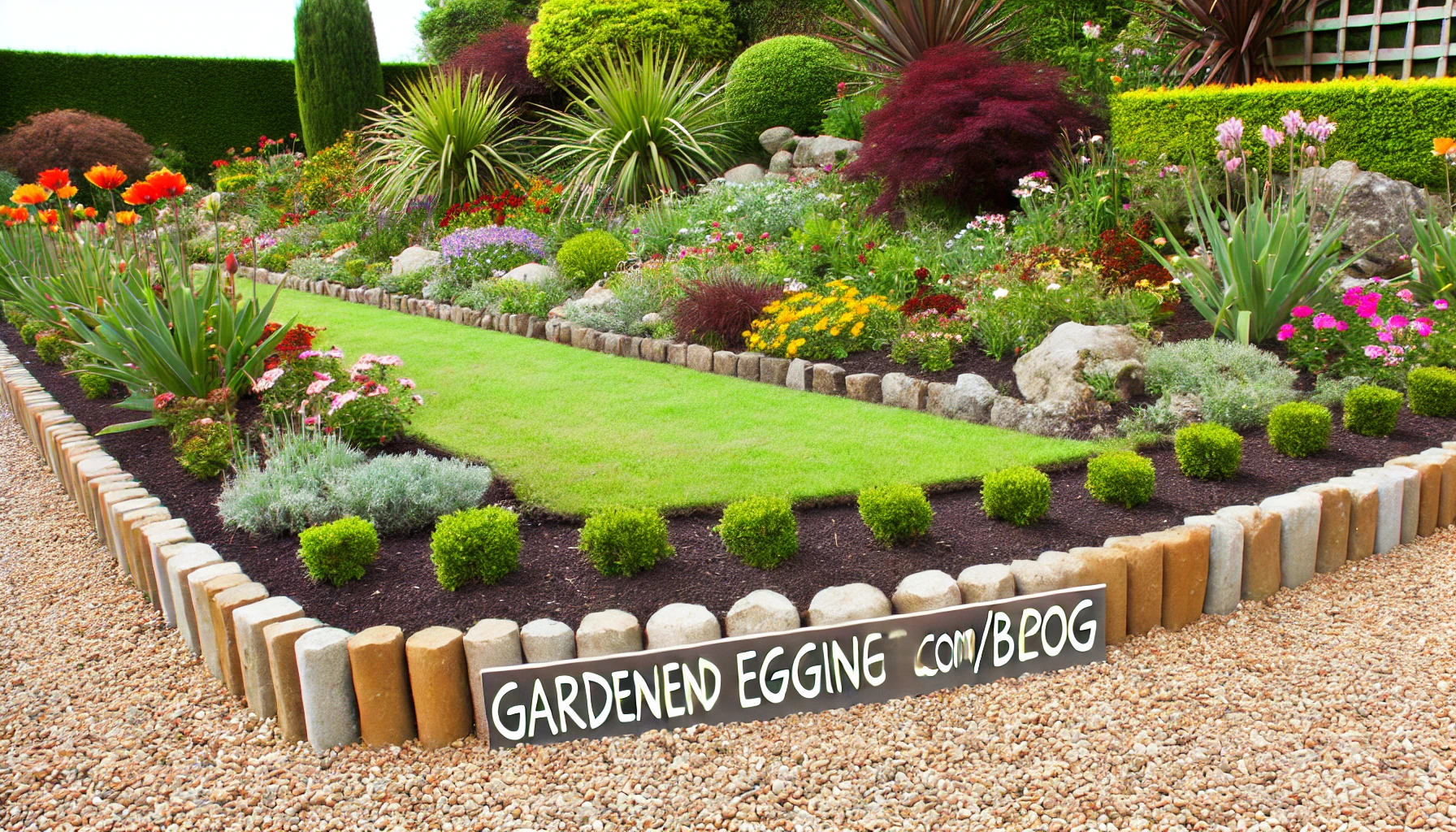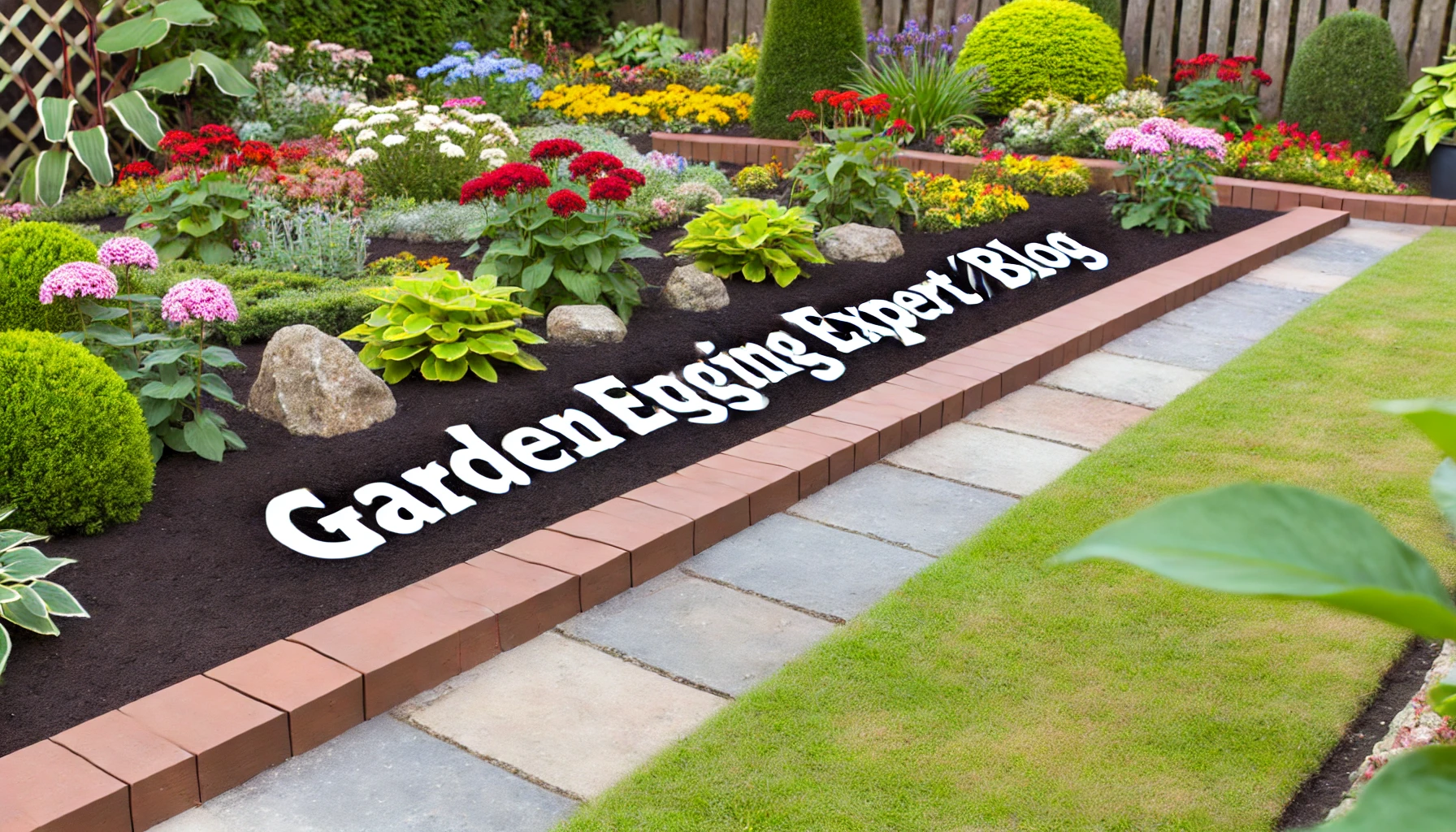Garden edging is more than just a functional addition to your outdoor space; it’s an essential element that brings structure, style, and beauty to your garden. Whether you’re looking to enhance your landscape design, maintain clean borders, or control invasive plant growth, garden edging offers practical solutions that can elevate your entire garden. This ultimate guide on gardenedgingexpert.com/blog will help you explore the various aspects of garden edging, providing tips, ideas, and best practices that will make your garden stand out.
Table of Contents
ToggleWhat Is Garden Edging and Why Is It Important?
At its core, garden edging serves as a physical barrier between different areas of your garden, such as separating the lawn from flower beds, pathways, or other landscaped areas. However, it does much more than that. Edging defines your space, giving your garden a more organized and aesthetically pleasing appearance. It also helps reduce maintenance by preventing grass or weeds from creeping into flower beds, and keeps soil, mulch, or gravel contained within their designated areas.
In addition to its practical uses, garden edging enhances the visual appeal of your garden. Whether you choose materials like stone, brick, wood, or metal, garden edging contributes to the overall design, adding a layer of sophistication and polish to your outdoor space.
Types of Garden Edging Materials
One of the first decisions you’ll need to make when planning your garden edging is choosing the right material. Each material has its unique aesthetic, durability, and cost, making it crucial to consider your garden’s style, maintenance needs, and budget. On gardenedgingexpert.com/blog, we break down the most common garden edging materials to help you make an informed choice.
Stone Edging
Stone is one of the most popular materials for garden edging due to its natural beauty and durability. Stone edging can range from large boulders to small cobblestones, depending on the look you want to achieve. This material is ideal for gardens with a rustic or traditional design, as it blends seamlessly with natural surroundings. Stone edging is long-lasting and requires minimal maintenance, making it a cost-effective option in the long run.
However, stone edging can be more expensive upfront compared to other materials. It’s also heavy, which can make installation more labor-intensive. But for those seeking a timeless and elegant garden border, stone is an excellent choice.
Brick Edging
Brick is another durable and attractive option for garden edging. It offers a classic, traditional look that works well in both formal and informal garden designs. Bricks can be laid in different patterns—such as a straight line or a zigzag—to create various effects. They are particularly well-suited for creating crisp, clean edges along pathways or flower beds.
Brick edging is relatively easy to install and can last for many years with minimal maintenance. However, like stone, it can be more costly upfront. On the plus side, brick edging is less susceptible to weathering and doesn’t require frequent replacement, making it a long-term investment in your garden’s appearance.
Wood Edging
Wood edging is a versatile and natural-looking option that can add warmth and charm to your garden. It’s available in a variety of forms, from simple wooden planks to more decorative designs like logs or timber. Wood is an excellent choice for cottage-style gardens or landscapes that emphasize organic, natural elements.
While wood edging is affordable and easy to install, it does require more maintenance than stone or brick. Wood can rot over time, especially in wet climates, so you’ll need to treat or replace it periodically. However, for gardeners who prioritize aesthetics and are willing to invest in maintenance, wood edging provides a lovely, rustic look.
Metal Edging
For those who prefer a sleek, modern appearance, metal edging is a great option. Metal edging—often made from steel or aluminum—creates clean, sharp lines that are perfect for contemporary garden designs. This material is extremely durable, resistant to rust, and requires little to no maintenance. It’s also flexible, allowing you to create curved edges if desired.
The primary drawback of metal edging is its cost, as it can be more expensive than other materials. Additionally, it may not fit the aesthetic of every garden, particularly those with a more natural or traditional design. However, for modern landscapes, metal edging provides a streamlined, sophisticated look.
Plastic Edging
Plastic edging is one of the most affordable and lightweight options available, making it a popular choice for DIY garden projects. It comes in a variety of styles and colors, so you can choose one that matches your garden’s design. Plastic edging is also flexible, allowing you to create curved borders with ease.
While plastic edging is easy to install and budget-friendly, it’s not as durable as other materials. Over time, it can crack or fade due to exposure to the elements, and it may require replacement more frequently than other types of edging. Still, for gardeners looking for a quick, low-cost solution, plastic edging can be a practical choice.
Creative Garden Edging Ideas to Elevate Your Landscape
Once you’ve selected the right material for your garden edging, it’s time to get creative. Garden edging can be more than just a practical border—it can also serve as a design element that enhances the overall aesthetic of your garden. On gardenedgingexpert.com/blog, we explore some creative garden edging ideas to inspire your next landscaping project.
1. Layered Stone Edging for a Terraced Effect
If you have a sloped garden or want to add some depth to your landscape, consider using layered stone edging to create a terraced effect. This technique involves stacking stones of different sizes to create a stepped look. It’s not only visually appealing but also helps with drainage and prevents soil erosion on slopes.
2. Recycled Material Edging for Eco-Friendly Gardens
For gardeners looking to reduce their environmental impact, using recycled materials for edging can be a great option. You can repurpose old bricks, tiles, or even bottles to create unique and sustainable garden borders. This approach not only adds character to your garden but also helps reduce waste.
3. Living Edges with Low-Growing Plants
Another creative idea is to use low-growing plants, such as thyme or lavender, as a living edge for your garden. This approach softens the lines of your borders while adding color and texture to your landscape. Living edges work particularly well in herb gardens or cottage-style landscapes.
4. Mosaic Tile Edging for a Burst of Color
If you’re looking to add a pop of color to your garden, consider using mosaic tiles for your edging. You can create intricate patterns with colorful tiles to give your garden a unique and artistic flair. This idea works well for small garden beds, pathways, or even as an accent in larger landscapes.
5. Log Edging for a Rustic Look
For a rustic, woodland-inspired garden, consider using logs or timber as your edging material. You can cut logs into small sections and place them vertically to create a charming border that blends seamlessly with natural surroundings. Log edging is perfect for creating a relaxed, organic feel in your garden.
How to Install Garden Edging: A Step-by-Step Guide
Now that you’ve chosen your material and design, it’s time to install your garden edging. Installing garden edging may seem like a daunting task, but with the right tools and a bit of planning, you can achieve professional-looking results. Follow this step-by-step guide from gardenedgingexpert.com/blog to get started.
Step 1: Plan and Mark Your Edging
Before you begin, take the time to plan out where your garden edging will go. Use a garden hose or string to mark the edges of your flower beds, pathways, or other areas you want to border. Make sure the lines are straight or follow the desired curve of your design.
Step 2: Dig a Trench
Once you’ve marked your edging, it’s time to dig a trench along the marked lines. The depth of the trench will depend on the type of edging material you’re using. For example, stone or brick edging will require a deeper trench than plastic or metal. Make sure the trench is wide enough to accommodate your edging material.
Step 3: Lay a Base (Optional)
For heavier materials like stone or brick, it’s a good idea to lay a base of sand or gravel in the trench. This will provide a stable foundation and help prevent shifting over time. Use a tamper or the back of a shovel to level the base.
Step 4: Install the Edging Material
Now it’s time to place your edging material in the trench. For stone or brick, lay each piece snugly against the next, ensuring they are level. For flexible materials like metal or plastic, you may need to secure them with stakes. Make sure the edging is flush with the ground or slightly above, depending on your design preference.
Step 5: Backfill the Trench
Once your edging is in place, backfill the trench with soil, making sure to tamp it down firmly around the edging material. This will help keep the edging secure and prevent shifting over time.
Step 6: Add Finishing Touches
After the edging is installed, take a step back and assess the overall look. Make any necessary adjustments to ensure the edging is straight or evenly spaced. Finally, add mulch, gravel, or plants to complete the look of your newly edged garden.
Maintenance Tips for Long-Lasting Garden Edging
Proper maintenance is essential to keeping your garden edging looking great for years to come. Different materials require different levels of care, but with the following tips from gardenedgingexpert.com/blog, you can ensure your edging stays in top shape.
Regular Cleaning
No matter what material you choose, regular cleaning is key to maintaining your garden edging. Remove dirt, debris, and plant matter from the edges, and hose down or scrub stone or brick edging to keep it looking fresh. For metal or plastic edging, a simple wipe-down with a damp cloth or sponge should suffice. Over time, dirt and debris can accumulate, especially in areas with heavy rainfall or where leaves and organic matter tend to pile up. Regular cleaning will prevent buildup and help your garden edging maintain its original appearance.
Monitor for Shifting or Erosion
If your garden experiences a lot of foot traffic, heavy rains, or shifting soil, your garden edging may start to move or become uneven over time. Check periodically for any signs of shifting, particularly with stone, brick, or wooden materials. If you notice that pieces are starting to tilt or move out of place, you may need to re-level or secure them by adding extra soil or gravel to the base.
Erosion is another factor to consider, especially if your edging is installed on a slope. Heavy rains can wash away soil or base material, causing your edging to become unstable. If this happens, you may need to reinforce the area with additional base material or consider using erosion control fabric beneath the edging to prevent further movement.
Treat Wood Edging for Longevity
If you’ve chosen wood edging, regular maintenance is essential to ensure its longevity. Untreated wood can rot over time, especially in areas with high moisture levels. To prevent this, apply a wood preservative or sealant every few years to protect the wood from moisture and insect damage. For areas with high rainfall or humidity, consider using pressure-treated wood, which is more resistant to rot and decay.
If you notice any signs of rot or insect infestation, replace the affected sections of wood immediately to prevent further damage. Wood edging can be a beautiful, natural-looking option, but it requires consistent care to maintain its durability.
Prevent Rust on Metal Edging
Metal edging is generally low-maintenance, but over time, exposure to the elements can cause rust, particularly with steel edging. To prevent rust, you can periodically treat metal edging with a rust-resistant coating or sealant. Aluminum edging is less prone to rust, making it a more durable option for wetter climates, but it can still benefit from occasional cleaning to remove dirt and debris.
If rust does appear on steel edging, you can use a wire brush or sandpaper to remove it, followed by applying a rust-inhibiting paint or sealant to prevent further corrosion. Regular monitoring and cleaning will help extend the life of your metal edging.
Keep Plants from Overgrowing Edges
One of the primary purposes of garden edging is to keep plants, grass, and weeds from encroaching on other areas of your garden. Over time, plants may start to overgrow the edges of your borders, reducing the effectiveness of your edging. Regular trimming and pruning can help prevent this from happening.
For invasive plants or grasses, you may need to install additional barriers, such as landscape fabric, beneath your edging to prevent roots from spreading underneath. Regular weeding around the edges will also help maintain clean, defined borders and prevent unwanted plant growth.
Enhancing Your Garden’s Aesthetic with Edging
While garden edging serves a practical purpose, it also plays a significant role in enhancing the overall aesthetic of your landscape. The right edging can add a sense of cohesion and elegance to your garden design, complementing your plants and other hardscaping features. At gardenedgingexpert.com/blog, we believe that garden edging should be both functional and beautiful.
Define Garden Zones
One of the simplest ways to elevate your garden’s appearance is by using edging to define different zones within your landscape. For example, you can use brick or stone edging to create a clear boundary between a flower bed and a lawn, or use metal edging to outline a pathway. This not only improves the visual appeal of your garden but also makes it easier to manage different areas.
By creating distinct zones, you can experiment with different plants, textures, and colors without worrying about them blending together in a chaotic way. Garden edging helps to establish order, making your landscape feel more intentional and thoughtfully designed.
Highlight Features with Unique Edging Designs
If you have specific features in your garden, such as a fountain, birdbath, or a statement plant, consider using edging to highlight these elements. Circular or curved edging can draw attention to focal points, creating a visual anchor for the entire landscape. Mosaic tiles, decorative stones, or uniquely shaped materials can add a touch of artistry and make your garden edging a standout feature in its own right.
For instance, a border of colorful tiles or intricately shaped metal can serve as a frame around a garden sculpture or water feature, turning it into a focal point. This not only enhances the overall aesthetic but also creates a cohesive theme for your garden.
Use Edging to Control Mulch and Gravel
In addition to adding beauty and structure, garden edging can help keep mulch, gravel, and soil contained within specific areas of your garden. This is especially useful for preventing mulch from spilling into pathways or lawns and keeping gravel neatly in place around hardscaping features. Contained mulch also helps retain moisture in flower beds, promoting healthier plant growth.
By using edging materials like stone, metal, or brick, you can create raised borders that keep mulch and gravel neatly within their designated areas. This not only improves the appearance of your garden but also reduces maintenance by minimizing the amount of material that needs to be replenished.
Eco-Friendly Garden Edging Solutions for Sustainable Landscaping
For environmentally conscious gardeners, choosing eco-friendly edging materials and practices can help reduce your garden’s environmental impact. On gardenedgingexpert.com/blog, we advocate for sustainable landscaping practices that are both beautiful and kind to the planet.
Recycled and Reclaimed Materials
One of the easiest ways to make your garden edging more eco-friendly is to use recycled or reclaimed materials. Old bricks, stones, or wood can be repurposed to create unique and sustainable garden borders. Not only does this reduce waste, but it also gives your garden a rustic, one-of-a-kind look that can’t be replicated with new materials.
You can also use more unconventional materials, such as repurposed metal, broken pottery, or even discarded glass bottles, to create artistic and eco-friendly edging. By thinking outside the box, you can turn what might otherwise be waste into a valuable garden feature.
Biodegradable Edging Materials
Another option for eco-friendly garden edging is to choose biodegradable materials like untreated wood or natural fibers. These materials will naturally decompose over time, reducing the environmental footprint of your garden. While biodegradable edging may require more frequent replacement, it aligns with the principles of sustainable gardening by minimizing long-term waste.
For a more permanent solution, consider using recycled plastic edging, which is made from post-consumer waste and offers a durable, long-lasting alternative to traditional plastic.
Read More: Discover Sustainable Living with NoBullSwipe.com – Tips, Decor, and More
Conclusion: Transform Your Garden with Expert Edging Techniques
Garden edging is an essential aspect of landscape design that can transform the appearance and functionality of your garden. Whether you choose stone, brick, wood, metal, or plastic, the right edging can elevate your garden’s aesthetic, improve maintenance, and create a more organized and visually appealing outdoor space.
By following the expert advice and tips from gardenedgingexpert.com/blog, you can select the perfect material, install your edging with confidence, and maintain it for years to come. Whether you’re a seasoned gardener or just starting your landscaping journey, the right garden edging will help you create a beautiful, well-defined space that reflects your personal style and enhances your outdoor living experience.
For more detailed guides, creative ideas, and best practices for garden edging, visit gardenedgingexpert.com/blog to explore a wealth of resources designed to help you achieve your dream garden.





